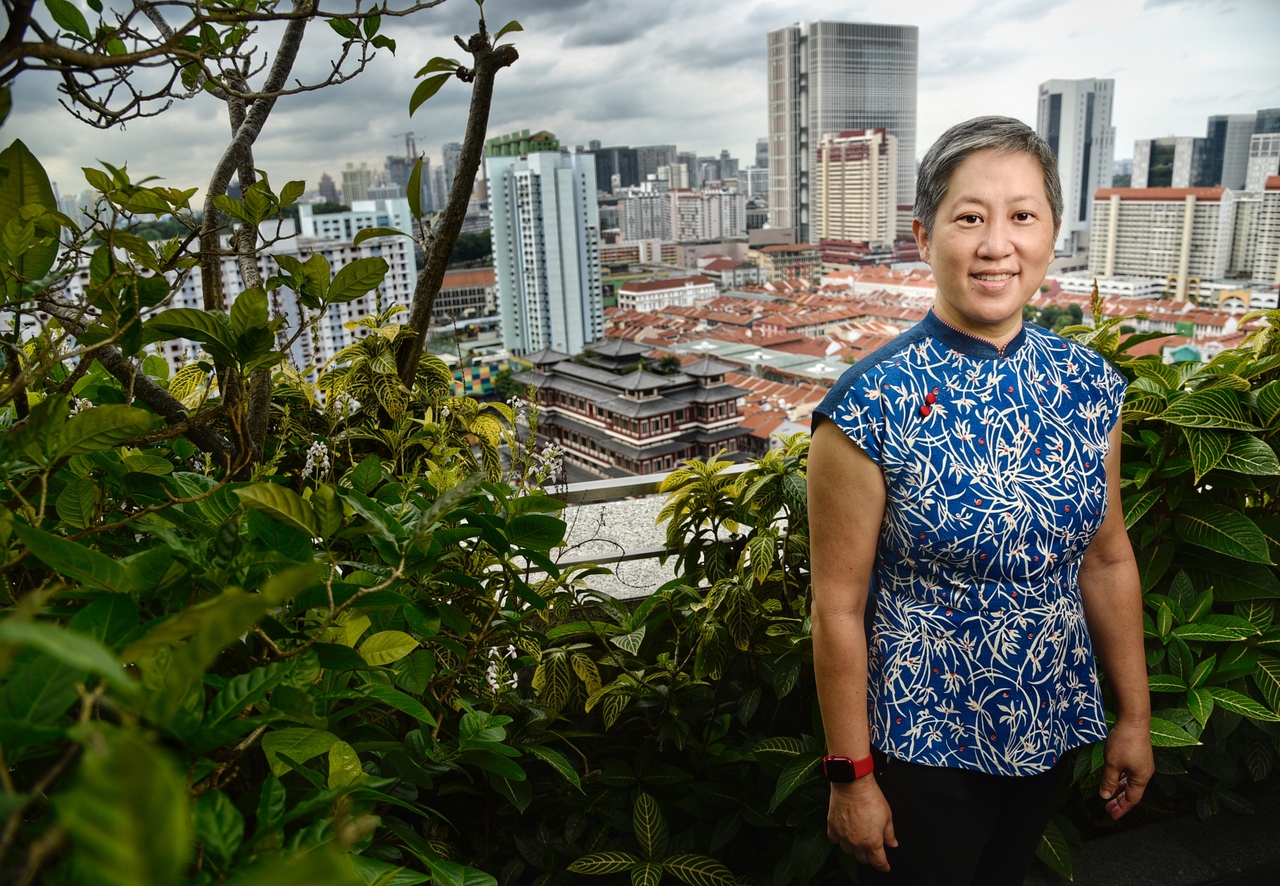New town centred on Paya Lebar Air Base site to be developed in stages, allowing for flexibility
Sign up now: Get ST's newsletters delivered to your inbox

URA chief planner and Deputy CEO Ms Hwang Yu-Ning said the development will be done "progressively over time," and is set to begin in the 2030s.
ST PHOTO: DESMOND WEE
Follow topic:
SINGAPORE - The Paya Lebar Air Base and its surrounding industrial areas will yield a space five times the size of Toa Payoh that will be developed progressively, instead of all at once, to allow for future flexibility.
Speaking to The Straits Times last week (Feb 21), the Urban Redevelopment Authority's (URA) chief planner Hwang Yu-Ning said: "Paya Lebar is a very large area and certainly as we build, we won't use up all the land at a shot.
"We will build progressively over time. And that time dimension gives us that flexibility to adjust the plans as we go along."
The authority recently emphasised the need for flexibility in its long-term plans, which will guide Singapore's development in the next 50 years and beyond. This will allow future generations to adapt and adjust to disruptions like Covid-19, it said.
Set to begin in the 2030s, the relocation of the airbase, currently occupied by the Republic of Singapore Air Force, will free up 800ha of space.
A new town will sprout up in the space and its surrounding areas, comprising housing and recreational facilities, as well as employment opportunities.
Ms Hwang said the development timeline will be similar to that of Jurong Lake District, which is being transformed in a massive project to create an economic hub in the west. It will continue to be developed over the next two to three decades, with the Government prioritising the sale of sites within the district.
She said: "We may start to build in Paya Lebar in a more concentrated manner to begin with, to have some critical mass. But over time... we can make further adjustments.
"Just like at Jurong Lake District, we have built Westgate and Jem - there's a certain critical mass there - and then as we build the new parcels we can adjust the proportion of office and other uses."
But the site's development will not mirror the new 700ha Tengah residential town, which is currently being built. Ms Hwang said Tengah's five districts are being built simultaneously as its primary purpose is to meet housing needs.
She added that the new Paya Lebar town, when ready, could serve as a regional centre akin to nodes such as Woodlands, Tampines, Punggol Digital District and one-north. These nodes bring offices closer to homes and out of the Central Business District by offering a mix of work, residential and recreational spaces.
The new Paya Lebar town will also give planners the opportunity to connect Hougang with Tampines, she said. Road users moving between the two towns currently have to skirt around the airbase.
Last September, Second Minister for National Development Indranee Rajah said two concept masterplans for the airbase area are in the works, and findings from these plans will be shared with the public this year.
Each plan is being developed by a team comprising members of the Singapore Institute of Planners and the Singapore Institute of Architects, in collaboration with the URA.
URA's 2019 masterplan said its development will build on the area's identity as a former airport and airbase.
Ms Hwang said this will also hold true for the Greater Southern Waterfront – spanning Pasir Panjang to Marina East – as it takes root.
She said: "How does the new development on the site respect that old story that was there and be able to recall - if not always retaining every part of that fabric - the history of the site? That's important to us.
"And we're working with the heritage community to try and infuse this more into our plans."

